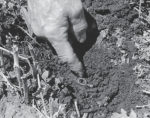What I've Learned from No-Tilling
30 Years Of Cover Crops Anchor No-Till System
Sharp increases in organic matter and vasity reduced fertilizer cost are just a couple of the benefits that David Brandt has realized on his Ohio farm.
Read More











